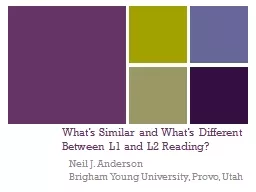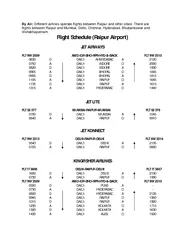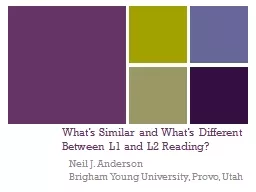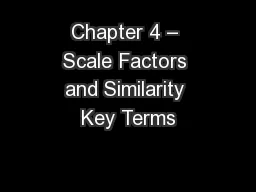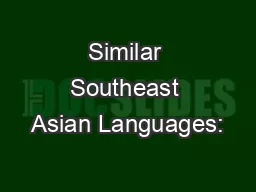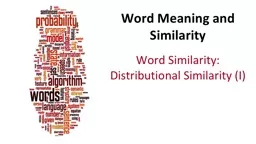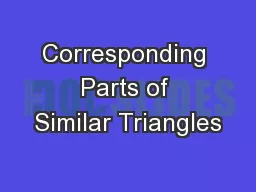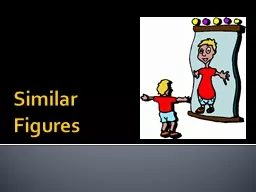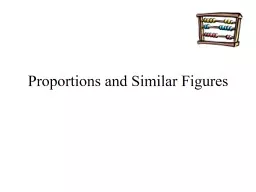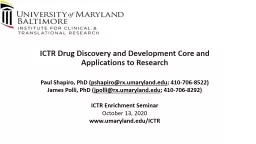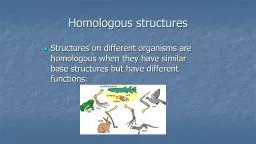PPT-What’s Similar and What’s Different Between L1 and L2 Reading?
Author : celsa-spraggs | Published Date : 2019-12-02
Whats Similar and Whats Different Between L1 and L2 Reading Neil J Anderson Brigham Young University Provo Utah Introduction Dr Neil Anderson Experience working
Presentation Embed Code
Download Presentation
Download Presentation The PPT/PDF document "What’s Similar and What’s Different ..." is the property of its rightful owner. Permission is granted to download and print the materials on this website for personal, non-commercial use only, and to display it on your personal computer provided you do not modify the materials and that you retain all copyright notices contained in the materials. By downloading content from our website, you accept the terms of this agreement.
What’s Similar and What’s Different Between L1 and L2 Reading?: Transcript
Download Rules Of Document
"What’s Similar and What’s Different Between L1 and L2 Reading?"The content belongs to its owner. You may download and print it for personal use, without modification, and keep all copyright notices. By downloading, you agree to these terms.
Related Documents

